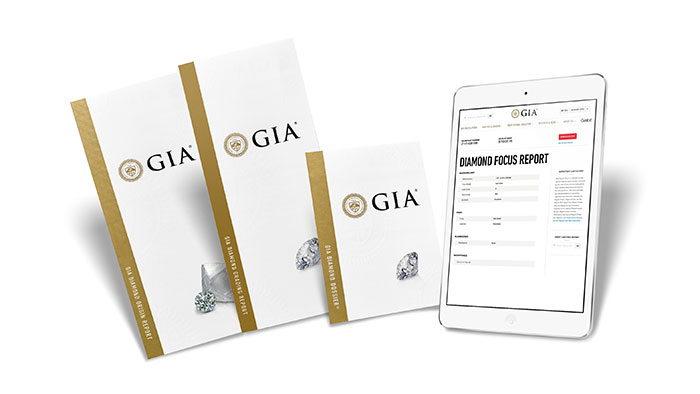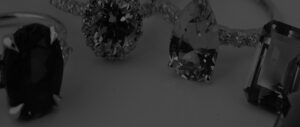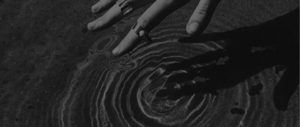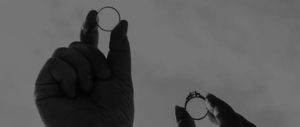Engagement Ring - In Progress
Setting
Stone
Limited Time: Purchase any Engagement Ring and receive a $250 Gift Card for your Wedding Band.
We guarantee that every single purchase directly impacts one person's life by giving them access to clean water.
Diamonds are a miraculous gem which grow in every color of the rainbow, as well as white, brown, colorless, and black! Diamonds gain their color during formation through trace element absorption or extreme heat and pressure.
Interestingly, what most people think of as a “white diamond,” is not actually white – but clear. Gemologists call it “colorless.” Colorless diamonds fall somewhere along the “normal” color range established by the Gemological Institute of America (GIA). The “normal” color range begins at completely colorless, like water, and becomes increasingly light yellow or light brown, like champagne. Lab diamonds can also show very light shades of blue or pink! Color is one of the famous 4 C’s of diamond grading.
The diamond color scale begins at D and ends at Z. The closer to D a diamond is, the more colorless it is. The closer to Z a stone is, the more body color it has. All other factors being equal, the closer to D a diamond sits on this scale, the rarer and more expensive it is.
We know what you’re thinking. What happened to letters A through C?! Letters A through C were abandoned long ago because retailers were promoting their diamonds using phrases like “A quality!” without really teaching people about the 4 C’s of diamonds. There was no industry standard for people to compare stones. To eliminate the confusion, the Gemological Institute of America (GIA) formed the current standard beginning with D.

A GIA chart showing diamond color grades. Photo Credit: GIA
Diamonds in the Colorless tier, D, E, and F, are completely colorless. D is an icy, clear color without a hint of color. E has only a slight hint of body color, which is impossible to see without comparing it to a D grade stone. F remains colorless, with just a bit more color that will not be visible at all when “face up.”
Near colorless diamonds, (G, H, I, and J grades,) are the best value in diamonds. G color is just one step down from the truly Colorless tier, so it still appears very colorless. H color is another good “near colorless” choice and is, in my opinion, the last color grade where color is not visible face up. I color begins to show some body color face up. However, in an excellent cut diamond, I color can still look nice. J color shows a bit more body color than I – this color is readily noticeable with the naked eye. In natural diamonds and yellow-brown tinted lab diamonds, I and J colored diamonds are best suited to yellow or rose gold. I and J colored blue nuance lab diamonds are best suited to white gold or platinum.
PRO TIP! G color diamonds are only one grade away from colorless, giving max value!
Although Do Amore does not show diamonds warmer than J color on its site, if a warmer stone is what you want, we can do a custom search and find you the perfect K-Z color stone!
Diamonds in grades K-Z face up with a significant amount of yellow or brown body color. Stones in these ranges will never look colorless. The closer to Z a diamond is, the more intense the body color of the gem is. K-Z diamonds can look stunning if set in yellow gold, with the intention of looking like fancy yellow or champagne diamonds (without the cost.) Couples interested in this look should consider a K-M color diamond for a very pale yellow or brown. For a light-to-medium toned yellow or brown diamond, couples should choose a stone in the N-R range. Finally, for a more intense color, check out the S-Z color range.

A range of diamond colors from D to Z. Photo Credit: GIA
Diamond experts use daylight-equivalent light and white backdrops, without magnification, to determine diamond color. Because people cannot accurately remember color, gemologists use Master Stones to compare and determine diamond hue. Master Stones are diamonds that have already been color graded by an independent lab. Comparing new diamonds against Master Stones ensures quality and consistency of diamond grading between different gemologists.
Fun fact! Gemologists color grade diamonds face down so that the sparkle of the stone does not distract them into giving it a more colorless grade. This very sparkle is the reason many couples choose G or H color stones for their engagement rings! Choosing a G or H color diamond can be a great way to save money. A well-cut G or H color diamond faces up “white!”
Although there are actual white diamonds, these stones are pretty rare, and not the topic of everyday discussion. Instead, trade professionals will often use the term “white” when discussing a diamond that “faces up” colorless. When used in this context, a “white diamond” means a near colorless G or H diamond that is particularly well cut, making the stone appear colorless. So, searching for a “white” diamond is a great way to maximize value!
The cut and shape of a diamond can affect your stone’s face up color. As we discussed above, diamonds are graded face down – but we expect you won’t be wearing it that way! So, paying attention to the color of your stone when it’s face up is important!
A well-proportioned brilliant cut diamond, such as a round, princess, radiant, marquise, cushion, or oval, will produce great sparkle. While this sparkle does not change the diamond’s color grade, it does detract from a certain amount of body color, making it less noticeable when face up. As a result, couples looking at brilliant cut diamonds should consider G, H, and I color stones for the best value.
Step cut stones, such as emerald cut and asscher cut, produce more of a mirror-like sheen than a sparkle. As a result, these stones do not mask body color, and are actually designed to show off color. So, if you and your partner are considering an emerald cut or an asscher cut diamond, in order to ensure your stone faces up white, look at colorless diamonds graded D, E, or F.
As your diamond is going to be cradled by its ring setting, it is important to consider how that setting’s color will interact with your diamond. Gold, platinum, and palladium are the most popular metals jewelers use to craft diamond engagement rings. Gold engagement rings come in a variety of beautiful hues, including white, yellow, and rose. Platinum and palladium are naturally white metals.
If you and your partner choose a yellow or rose gold setting, your diamond will reflect a certain amount of your setting’s color. This is because your diamond is a crystal, and has less body color than your solid metal setting. As a result of this reflection, a colorless diamond set in a warm toned metal will appear warmer in tone. On the other hand, the warm hue of your setting will also mask the slight body color of a near colorless stone! Consequently, couples choosing yellow or rose gold settings should consider selecting an H or I color diamond for a “white” look at a great value.
A 2.71-carat H color diamond in a yellow gold setting | A 1-carat G color diamond in a yellow gold setting
If you and your partner decide a white gold, platinum, or palladium setting is more your style, your setting will look best with a D-H color diamond. These stones face up white. Unlike warm toned metals which mask warmer toned stones, white gold, platinum, and palladium are like a blank canvas. The body color of I and J grade diamonds may appear more vivid against cool toned metal. Accordingly, couples selecting white gold, platinum, or palladium should consider color in the range of D-H for the most colorless outcome.
A .75- carat I color diamond in a white gold setting | A .75- carat F color diamond in a white gold setting
Before you search for your perfect stone, let’s talk about one more thing: diamond certification.
There are many gem labs that grade diamonds (GIA, IGI, EGL, AGS, and many “in house” certifiers), but they do not all grade strictly. GIA is the most trusted gemological lab, and grades diamonds with the strictest ethics. A GIA certificate is the best protection for your special diamond investment, because GIA is the most trustworthy and well known gem lab.

Examples of GIA grading reports. Photo Credit: GIA
Yes, I would love to! I can do a custom search to help you hand-select the perfect white diamond for your special engagement, while making sure the clarity and cut are also ideal. Contact me here and tell me a bit about what you’re looking for and I will email you back a personalized selection of diamonds! Or, alternatively, check out the recommended diamonds I select based on gemologist confirmed face up color, ideally cut proportions, and utmost bang for your buck!
Verifiably Ethical & Sustainable
Guaranteed 1:1 Impact
Personalized 1:1 Customer Service
handcrafted & american-made
you before us, always
Verifiably Ethical & Sustainable
Guaranteed 1:1 Impact
Personalized 1:1 Customer Service
handcrafted & american-made
you before us, always
Thoughtfully crafted, made to last, and designed for life's most meaningful moments. LEARN MORE
Diamonds, Gemstones, & Metals

Every piece of Do Amore jewelry begins by not hurting the world. All our natural diamonds are either ethically sourced in Canada, recycled to eliminate additional demand, or accompanied by a blockchain ledger showing every hand your diamond passed through, proving your stone is truly conflict-free.
We also offer sustainable lab-created stones and guarantee all precious metals are recycled to eliminate the environmental impact of mining. Since March 2022, we carry absolutely no Russian diamonds and continue to urge the industry to follow suit.
Clean Water

We desire to deepen the well of love in the world. We guarantee that every single purchase—whether engagement ring, wedding band, or piece of jewelry—directly impacts one person’s life by giving them access to clean water.
We do this by directly matching jewelry purchases to people in communities to ensure our funding has a one-to-one impact. We also show you the exact GPS coordinates and a photo of the water well your ring or piece of jewelry helped fund.
Customer Service

As a small, 100% founder- and employee-owned team, one-to-one encounters are at the heart of our values. Whichever way you want support throughout your engagement ring or jewelry purchase process, our team is here to accommodate you.
From high-touch to hands-off, video calls to text messages, you have our dedicated, responsive team on your side from the moment you start your search, to the day your well is built, to the time we meet again.
Engagement Rings, Bands, & Jewelry

Every Do Amore design, whether one of our own or unique to you, is beautifully handcrafted in America and made specifically for you. Each ring is made to order, every time.
From classic to custom, you have the option to select from dozens of gorgeous settings or work with our design team to create something entirely bespoke. Plus, you are always covered for free inspections, polishing, cleaning, stone tightening, rhodium-plating, and resizing for life.
Our Promise

We care about what matters most to you, not what’s easiest for us. If it’s a minor change to a setting or arriving at a completely custom design, we work to ensure you get precisely what you love.
From statement-making to understated, we have options at any price point. Plus, you always have our team on your side searching to bring you every stone within your specifications. We also offer 60-day returns and a limited lifetime warranty to cover you in the rare event of a manufacturing defect.